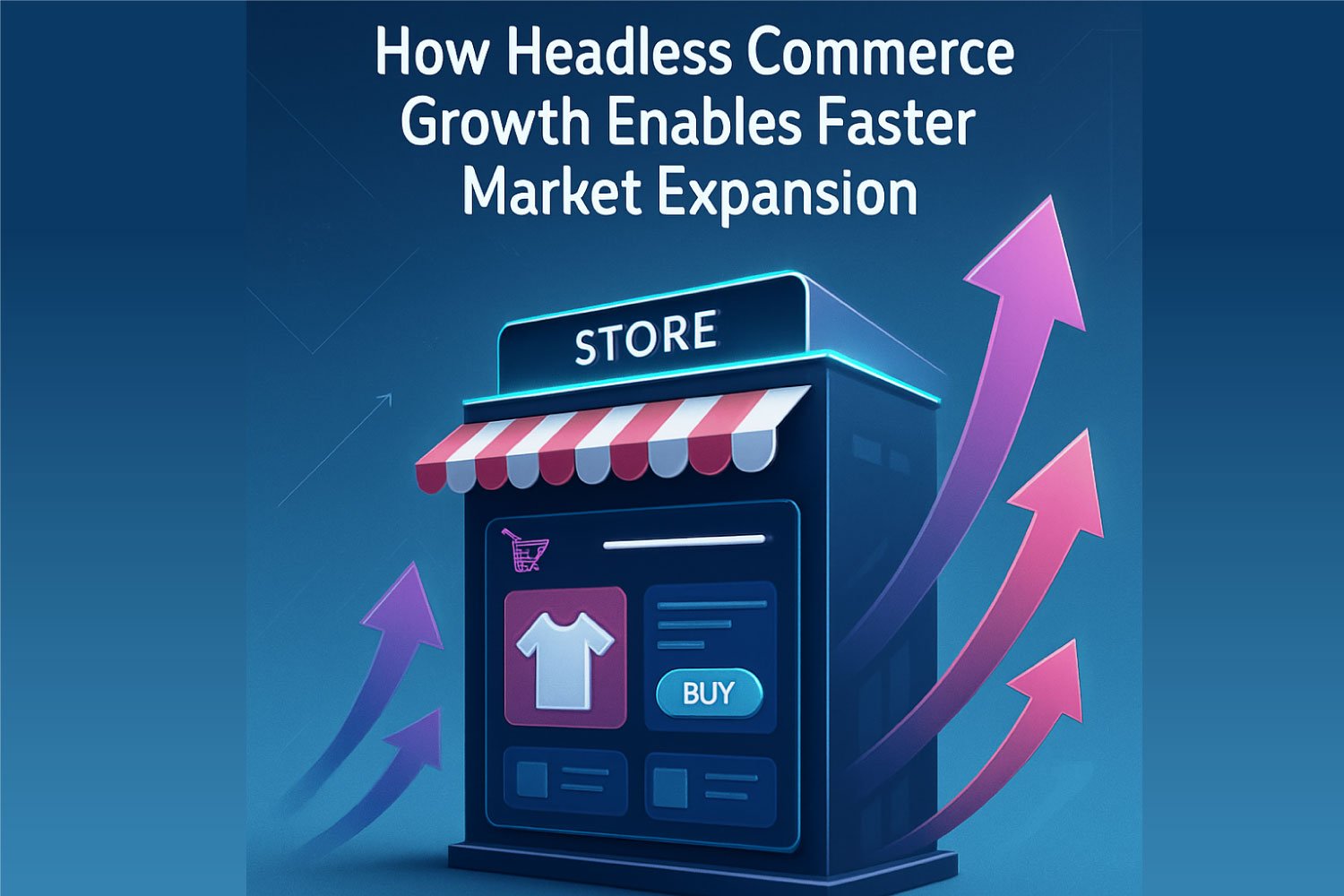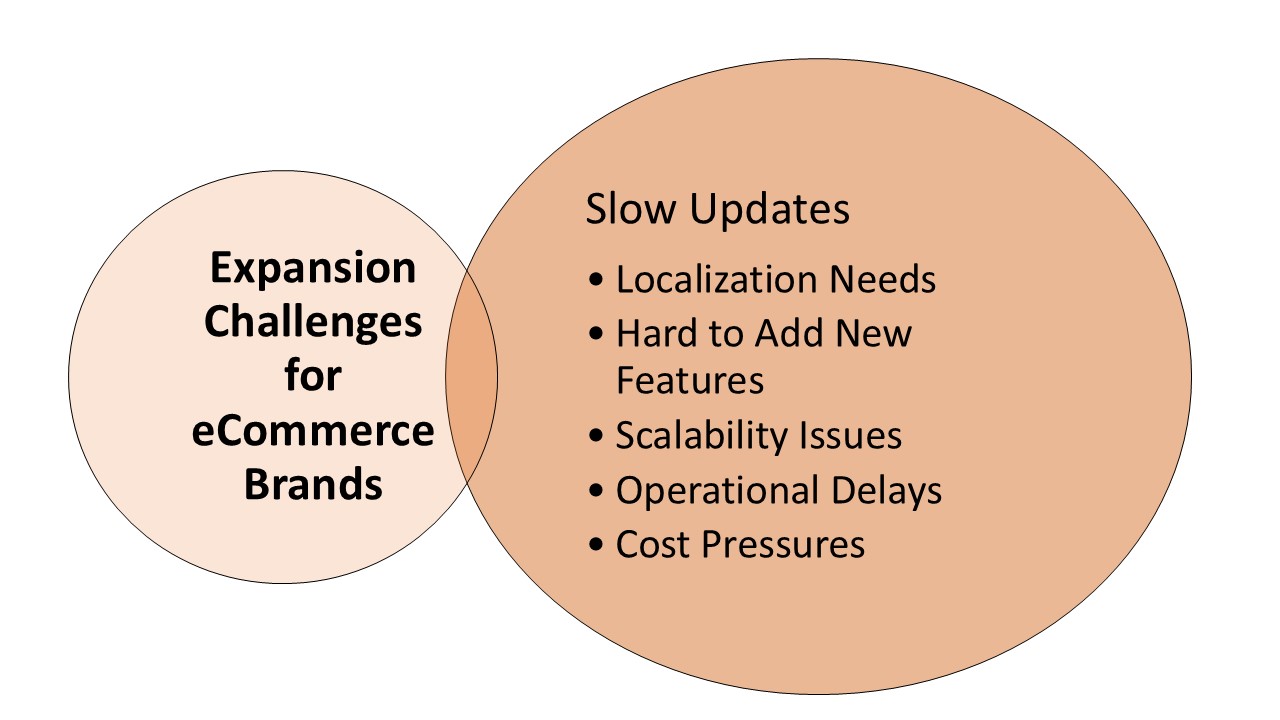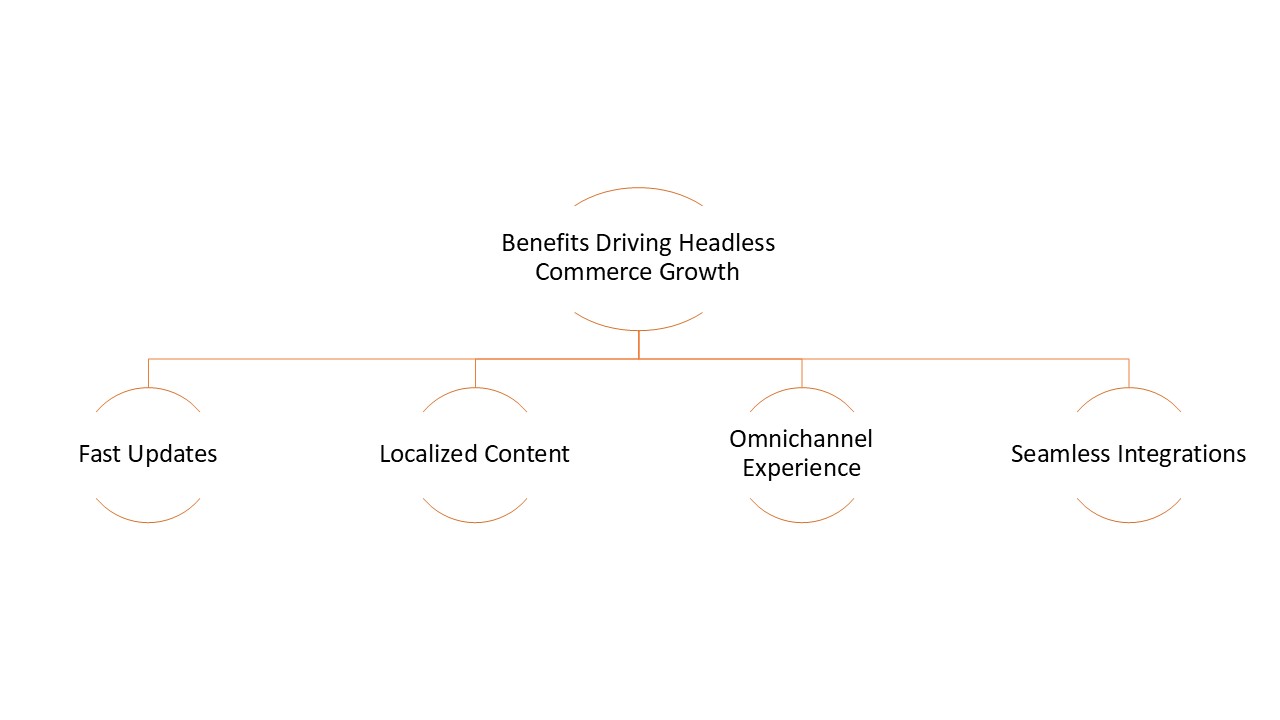AI-Powered Martech: Unlocking Hyper-Personalization and Real-Time Campaign Success


Many brands want to expand fast, but outdated e-commerce platforms tie their websites to the backend, and this makes launching new sites slow and costly. When they try to enter new markets, they often face delays and higher expenses. Headless commerce solves this problem. It is an architecture where the front end, the part customers see, and the back end, the engine that runs everything, are separated and connected through APIs. This separation allows businesses to launch quickly, update websites faster, and meet customer demands easily.
This flexibility gives them a real edge when moving into new markets. Using headless commerce, businesses see higher sales and better conversion rates.
API-driven systems help e-commerce companies scale while traditional systems struggle with large amounts of data. Headless commerce splits back-end operations into modular microservices. Each function, like catalog management, order processing, or personalization, can be developed and maintained independently. Containerization makes integration and cloud deployment faster.
In this article, we’re going to discuss how headless commerce enables faster market expansion. We’ll also talk about the expansion challenges, benefits of headless, and top brands that are successfully using headless for a faster market expansion along with practical tips and strategies.
Growing an e-commerce brand into new markets sounds exciting, but the reality is not that simple. When you are working with traditional platforms, a lot of challenges can slow you down. Let’s look at some of the common ones:

Every new market means changes—whether it is adding new payment options, adjusting product details, or running local campaigns. On old systems, even a small update takes a lot of time because everything is tightly connected.
Expanding into new regions is not simple. You need local languages, currencies, tax rules, and cultural fit. Without flexible systems, creating that experience is difficult. This is one area where headless commerce growth becomes important, as it allows brands to adapt content and features faster.
Shoppers today expect modern experiences like virtual product previews or AI-driven suggestions. With older systems, plugging in these tools is difficult. That means brands often miss the chance to offer the kind of experiences customers now look for.
More sales mean more complexity. Bigger inventories, new logistics, and multiple payments must be managed well. Any slip in operations affects customer trust.
Expanding to new regions adds more work. You deal with bigger inventories, new logistics partners, and the need to give customers the same experience everywhere. On rigid platforms, these tasks depend heavily on IT. Business teams end up waiting instead of acting fast. Headless commerce growth helps reduce these delays by giving business teams more flexibility to act without always relying on IT.
Growth comes with expenses. Marketing, tech upgrades, and supply chains all cost more. The challenge is that prices cannot always be increased, because customers will simply choose a competitor. Balancing expenses while staying competitive is a major challenge.
Now let’s discuss the top benefits of headless.

The backend and frontend work separately in headless commerce. This means design changes, product launches, or promotions go live quickly. No need to wait for backend edits.
Headless makes region-based content simple. You can add local languages, currencies, and offers with ease. This helps brands connect with customers and grow globally with less effort.
Headless keeps the shopping experience consistent. Websites, apps, kiosks, and smart devices all stay in sync. A product update in one place shows up everywhere.
APIs connect payments, CRMs, marketing tools, and analytics. Operations run smoother without heavy coding. This seamless connectivity supports business agility and efficient scaling.
Headless commerce growth brings both technical and operational advantages. Its flexible setup allows businesses to customize digital experiences while streamlining backend operations. This combination makes faster market expansion possible. Let’s look at the key technical and operational benefits:

The headless commerce platform has reduced the time to launch e-commerce stores and sell products to customers. As the front-end and back-end work separately, you can effortlessly make updates to web apps and experiment with the different channels, like mobile apps. This lets you make major and minor changes without disrupting your main business operations. It gives you more control over testing.
Headless commerce allows teams to work independently. Frontend and backend move at their own pace, so features reach customers faster. This means customer-facing features can be built without waiting for backend updates, which makes delivery much faster. Front-end developers also get more freedom. They can design flexible, optimized interfaces that adapt to changing customer needs. New features, channels, and even global rollouts become easier with an API-first setup, and scaling to new markets is far easier.
Headless commerce eliminates the delays caused by old e-commerce systems. You no longer need to wait for changes in the backend to update the storefront. It allows quick testing and offers for different customer groups. Since the backend is untouched, changes are safe. Faster site speed adds to the smooth shopping experience.
IT leaders need systems that can support new tools without expensive changes. A decoupled setup makes it easier to add AR and VR for product views, voice commerce on smart speakers, and AI based personalization. Developers can connect these features to websites, apps, or kiosks. This approach helps teams move faster, reduce complexity, and scale as the business grows, keeping brands ready for the future.
Headless makes content easy to adapt. You can show products in local languages and currencies. It works on websites, apps, kiosks, and even voice tools. Shoppers feel at home wherever they buy.
On traditional systems, even small changes need IT help. With headless, business teams can update content on their own. Developers spend time building new features instead of fixing old ones.
Brands use headless commerce to grow faster and serve customers better. Here are some examples:
Here is a simple step-by-step guide to grow your business using headless commerce:

Decide what you want to improve or achieve. It could be a faster website or selling in new markets. Make sure your whole team knows the plan.
Pick a headless platform that fits your current setup. It should also be able to grow with your business.
Figure out how things like orders and inventory will flow between backend, front-end, and third party tools so everything runs smoothly.
Try headless on one part of your site first, like product pages or checkout. Fix any issues before moving on.
Add new features or new sales channels slowly. This keeps risks low and helps you learn along the way.
Make sure people like developers, marketers, and support staff know how to use the new system so they can help keep it running well.
Keep checking how your site is doing and what customers think. Use the data to refine and optimize.
Here are some of the strategies that can be used to maximize the headless commerce growth for market expansion:
Headless commerce lets you move faster, stay flexible, and connect new tools without slowing down your business. It makes growing your company easier and faster.
At RBM Software, we guide brands through this shift with a process that cuts risks and delivers value quickly. If you want to see how it could work for you, our team can review your setup and share with you where the real ROI lies. Book your free consultation today!